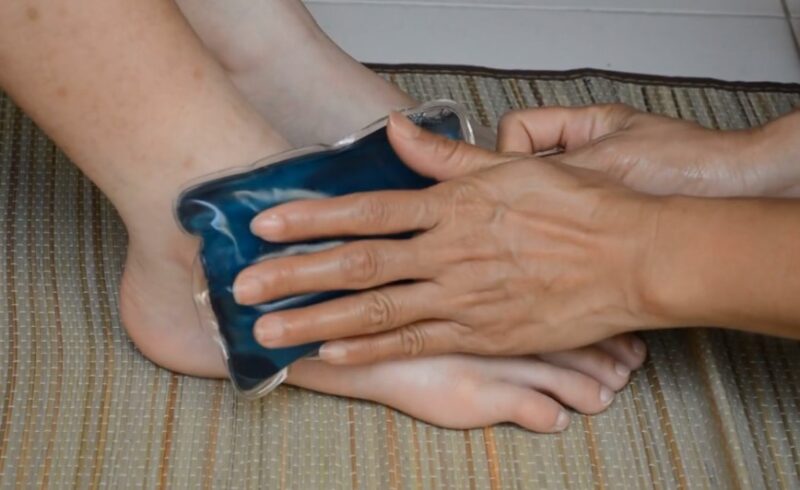Frostbite scars can serve as unwelcome reminders of exposure to extreme cold, often leaving individuals seeking effective methods to minimize or eliminate their appearance.
The journey to healing these scars involves a combination of medical treatments, home remedies, and preventive measures to ensure the skin regains its health and vitality. With the right approach, it’s possible to significantly reduce the visibility of frostbite scars, restoring confidence and comfort.
Identify the Scar Type
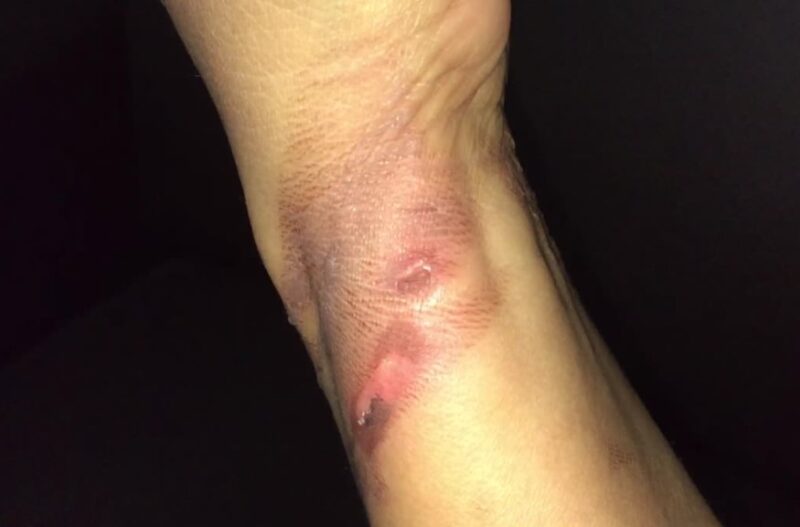
Frostbite scars can vary widely in appearance, texture, and severity, influencing the choice of healing methods.
Types of Frostbite Scars
- Hypopigmented Scars: These scars are lighter than the surrounding skin due to a loss of pigment.
- Hyperpigmented Scars: Darker than the surrounding skin, these scars have an excess of pigment.
- Textured Scars: Scars that are raised, depressed, or have a rough texture.
- Keloid Scars: Thick, puckered, itchy clusters of scar tissue that grow beyond the edges of the wound or incision.
Correctly identifying the type of scar you have is essential for effective treatment. Each scar type responds differently to treatments, and what works for one may not work for another.
Consult a Dermatologist

Seeking advice from a dermatologist is a critical step in treating frostbite scars effectively. These medical professionals specialize in skin conditions and can offer insights and treatments not available over the counter.
Why is It Important?
- Expert Diagnosis: Dermatologists can accurately identify the type of frostbite scar and its stage of healing.
- Personalized Treatment Plans: They create tailored treatment strategies that address your specific scar characteristics and personal health history.
- Access to Advanced Treatments: Dermatologists can provide or recommend procedures like laser therapy, cryotherapy, and prescription creams that are more effective than home remedies.
Prepare for the Appointment
- Document the Scar’s Progress: Take notes or photos of your scar over time to show its development.
- List Questions and Concerns: Write down any questions or concerns you have about your scar or the treatment process to ensure you cover all bases during your consultation.
- Be Open to Suggestions: Dermatologists might suggest treatments you haven’t considered. Keeping an open mind can lead to more effective scar management.
What to Expect?
During the consultation, the dermatologist will examine your scar, ask about your medical history, and discuss potential treatment options. They may also perform tests to better understand your scar’s characteristics.
After the Consultation
Following your appointment, you’ll likely have a clearer understanding of your scar and a plan to move forward. This may include prescriptions, treatment schedules, or follow-up appointments.
Use Silicone Gel Sheets
![]()
Silicone gel sheets represent a non-invasive option for improving the appearance of frostbite scars. These sheets are self-adhesive and can be cut to fit the size of the scar, making them an easy and effective treatment method for daily use.
How Silicone Gel Sheets Work?
- Moisture Lock: They help retain moisture over the scar, which is essential for healing.
- Pressure Application: The sheets apply gentle pressure, which can reduce scar thickness and color.
- Collagen Production: They can normalize the collagen synthesis process, leading to a smoother skin texture.
Choose the Right Product
- Medical Grade: Opt for medical-grade silicone sheets, which are specifically designed for scar treatment.
- Thickness and Flexibility: Choose a sheet that is flexible and thin enough to comfortably wear over the scar area.
- Breathability: Ensure the product allows your skin to breathe, to prevent any moisture buildup that could lead to skin irritation.
Application Tips
- Clean and Dry: Before applying the sheet, clean and dry the scar area to ensure the sheet adheres properly.
- Daily Use: For best results, wear silicone gel sheets daily for several hours, or as recommended by a healthcare provider.
- Long-Term Commitment: Consistent use over months is often necessary to see significant improvements in the scar’s appearance.
Apply Scar Minimizing Creams
Scar minimizing creams offer a convenient and effective way to reduce the visibility of frostbite scars. These topical treatments can improve the appearance of scars by hydrating the skin, reducing redness, and encouraging cell renewal.
Key Ingredients to Look For
- Hydroquinone: Helps lighten hyperpigmented scars.
- Allantoin: Promotes skin smoothness and aids in the healing process.
- Vitamin E: An antioxidant that helps moisturize the skin and improve its elasticity.
- Silicone: Forms a protective barrier over the scar, keeping it hydrated and allowing it to heal more effectively.
How to Apply?
- Clean Area: Start with clean, dry skin to ensure the cream penetrates effectively.
- Gentle Application: Apply a small amount of cream to the scar, using gentle, circular motions until fully absorbed.
- Frequency: Follow the product instructions, usually applying one to two times daily.
Select the Right Cream
- Consultation: Consider consulting a dermatologist to recommend a cream that suits your specific scar type and skin sensitivity.
- Patch Test: Before applying the cream to your scar, do a patch test on a small area of your skin to ensure there’s no allergic reaction.
Consistency is Key
- Regular Use: Consistent application as directed is crucial for seeing results. It may take several weeks or even months to notice significant changes.
- Sun Protection: Protect the scar from sun exposure by applying sunscreen over the area daily, as UV rays can darken scars, making them more noticeable.
Monitoring and Adjustment
- Observe Changes: Regularly assess the scar’s appearance to monitor its progress.
- Adjustments: If you don’t see improvement after a few months, consult your dermatologist for possible adjustments to your treatment plan or exploring other options.
Consider Laser Therapy
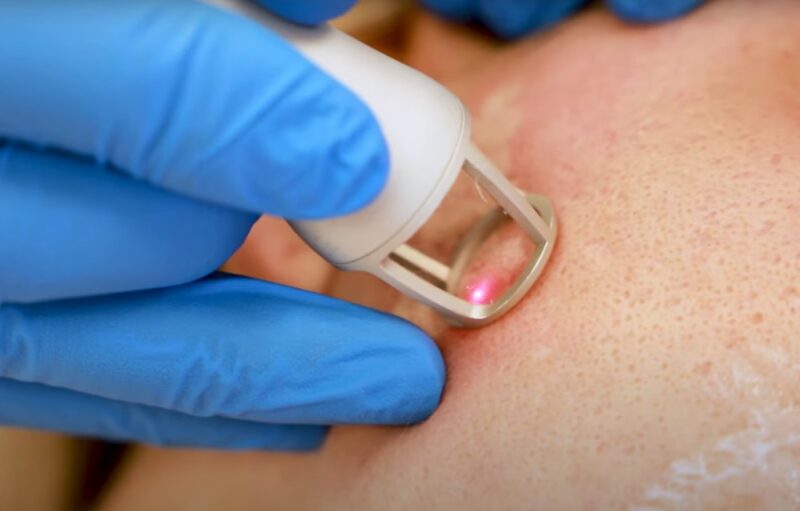
Laser therapy stands out as a sophisticated option for reducing the appearance of frostbite scars. This treatment uses focused light to target scar tissue, promoting the growth of new, healthy skin cells.
What is Laser Therapy?
Laser therapy works by delivering short pulses of light at specific wavelengths to remove the outer layer of the skin (in ablative laser therapy) or by penetrating the skin to stimulate collagen production and cell renewal (in non-ablative treatments).
Types of Lasers Used
- Fractional Laser: Targets a fraction of the skin at a time, promoting rapid healing.
- Pulsed-Dye Laser: Effective for reducing redness and improving texture.
- CO2 Laser: Used for deeper scars, it removes damaged skin layers to reveal smoother skin underneath.
More About the Procedure
- Consultation: A detailed discussion with a dermatologist or plastic surgeon is necessary to determine if laser therapy is suitable for your scar type and skin.
- Preparation: Follow any pre-treatment instructions, such as avoiding sun exposure or certain medications.
- During the Session: The procedure’s duration varies, but it generally lasts between 30 minutes to an hour, depending on the scar’s size and depth.
- Post-Treatment Care: Adhering to aftercare instructions is crucial for healing and achieving optimal results.
Benefits and Considerations
- Effectiveness: Laser therapy can significantly improve the scar’s appearance, making it less noticeable.
- Recovery Time: Non-ablative lasers have minimal downtime, while ablative lasers may require a few weeks of healing.
- Cost and Commitment: It can be expensive and may require multiple sessions to achieve desired results.
Making the Decision
- Research: Look into different laser treatments and their outcomes for frostbite scars.
- Professional Advice: Only proceed with laser therapy after consulting with a healthcare professional who can provide personalized advice based on your scar and skin type.
Explore Microdermabrasion
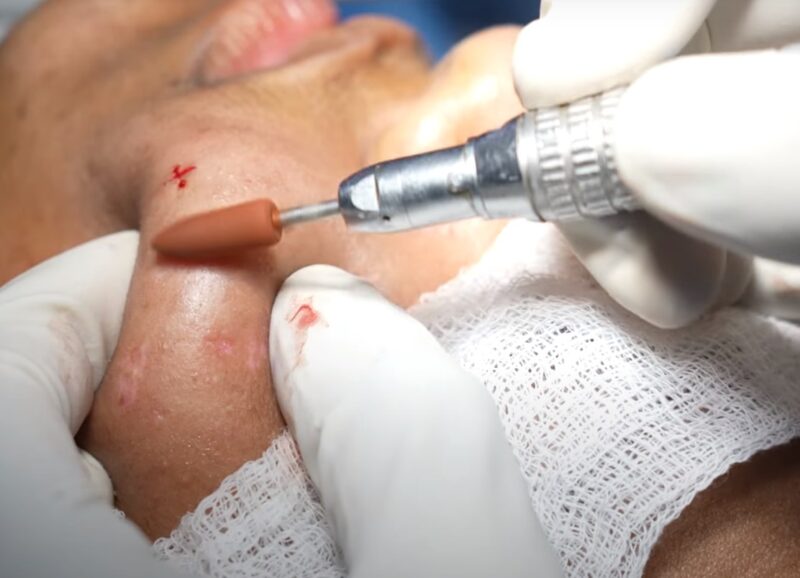
Microdermabrasion is a minimally invasive procedure designed to renew overall skin tone and texture. It can be particularly beneficial for improving the appearance of frostbite scars by gently removing the skin’s outer layer.
What is Microdermabrasion?
This procedure uses a special applicator with an abrasive surface to sand away the thick outer layer of the skin to rejuvenate it. Some devices spray fine particles of aluminum oxide or sodium bicarbonate with a vacuum/suction to perform the same effect.
Benefits for Frostbite Scars
- Smoothing Texture: Helps in smoothing out the rough or uneven texture of scars.
- Enhancing Skin Appearance: Can make scars less noticeable by improving skin tone and promoting a healthier look.
- Stimulating Collagen Production: The process encourages the growth of new collagen, which can make the skin at the scar site firmer and more elastic.
The Procedure
- Initial Consultation: Discuss your skin type, scar concerns, and goals with a dermatologist or licensed skincare professional.
- During the Treatment: Expect a gentle abrasion and suctioning on your skin, which can last about 30 minutes to an hour.
- Post-Treatment Care: The skin may appear slightly red and feel dry or tight for about 24 hours. Follow any specific aftercare instructions provided by your skincare professional.
Considerations
- Number of Sessions: Multiple treatments are often necessary to achieve noticeable improvements in the scar’s appearance.
- Skin Sensitivity: Some individuals may experience mild tenderness or swelling post-treatment.
- Cost and Accessibility: Prices vary based on location and provider, but it’s generally more accessible than more invasive procedures.
How to Choose a Reliable Provider?
- Certification and Experience: Ensure the provider is certified and experienced in performing microdermabrasion, especially on scarred skin.
- Consult Reviews: Look for feedback from previous clients to gauge satisfaction and outcomes.
Try Cryotherapy
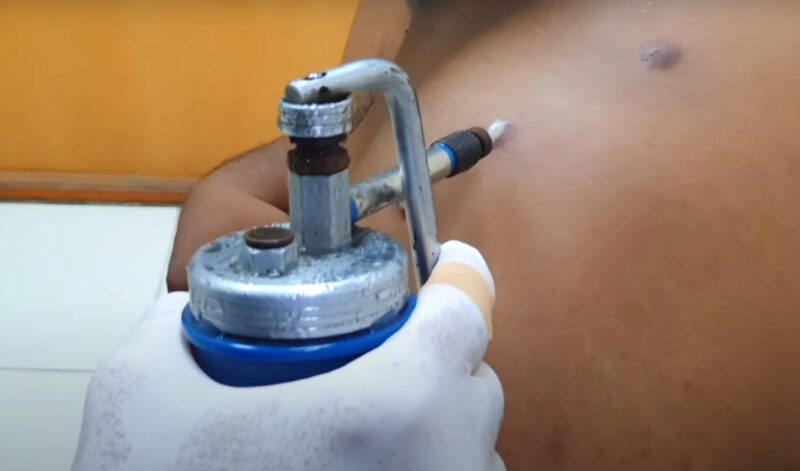
Cryotherapy involves the use of extreme cold to treat frostbite scars. This method can reduce scar size and improve skin texture by freezing the scar tissue, leading to its gradual removal.
How Cryotherapy Works?
- Targeted Cold: Liquid nitrogen or another cold source is applied to the scar, freezing the tissue.
- Cell Damage: The extreme cold causes the scar tissue cells to die, which the body then naturally removes.
- Improved Appearance: Over time, the scar may become less noticeable as new, healthy skin replaces the treated area.
The Procedure
- Initial Consultation: Discuss your scar and treatment expectations with a professional experienced in cryotherapy.
- Treatment Sessions: The number of sessions depends on the scar’s size and response to treatment. Each session lasts a few minutes.
- Healing Process: The treated area may blister and peel, a normal part of the healing process.
Benefits
- Minimal Discomfort: Cryotherapy is relatively painless, with some patients experiencing a slight stinging sensation.
- Quick Sessions: Each treatment is quick, making it convenient for busy schedules.
- Non-Invasive: This method does not require incisions, reducing the risk of infection and complications.
Considerations
- Skin Type and Color: Cryotherapy may cause pigmentation changes, especially in darker skin tones.
- Multiple Treatments: Several sessions may be necessary to achieve the desired effect.
- Professional Guidance: Always seek treatment from a certified professional to minimize risks and ensure proper aftercare.
Aftercare
- Follow-Up: Attend follow-up appointments to monitor healing and assess the need for additional sessions.
- Skin Care: Protect the treated area from the sun and follow any specific skincare instructions provided by your healthcare provider.
Maintain Skin Hydration
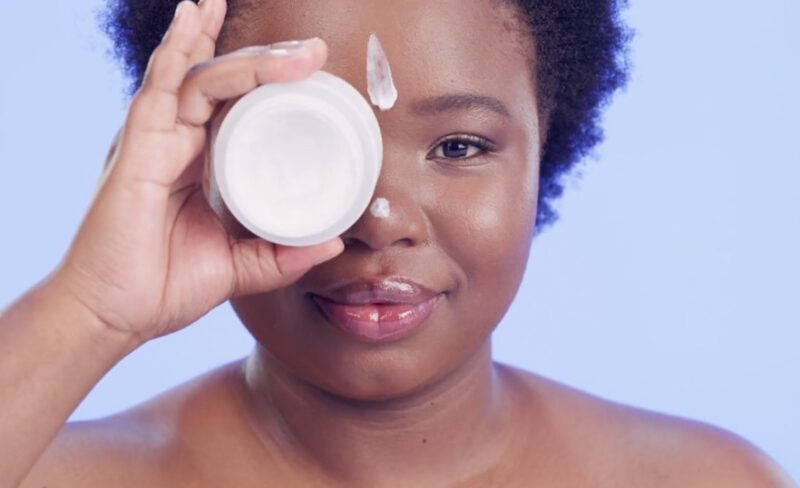
Keeping the skin well-hydrated is essential for the healing process of frostbite scars. Proper hydration can improve skin elasticity, reduce itchiness, and support the regeneration of skin cells.
Importance of Hydration
- Skin Barrier: Hydration strengthens the skin’s barrier, protecting against infections and environmental damage.
- Scar Appearance: Moisturized skin can make scars less noticeable and more pliable.
Effective Hydration Methods
- Use a Humidifier: Adding moisture to the air can prevent your skin from becoming too dry, especially in winter.
- Hydrating Products: Look for lotions and creams with hyaluronic acid, glycerin, or ceramides, which attract and lock in moisture.
- Water Intake: Drinking plenty of water throughout the day helps maintain overall hydration, benefiting your skin.
Application Tips
- After Bathing: Apply moisturizer to damp skin to help seal in moisture.
- Gentle Products: Choose products free from fragrances and irritants, particularly if your skin is sensitive.
- Consistent Routine: Make hydration a daily part of your skincare routine for ongoing benefits.
Pay Attention to Your Skin’s Needs
- Adjustments: Your skin’s hydration needs can change with the seasons, so be prepared to adjust your products and routine accordingly.
- Signs of Dehydration: Look out for signs of dehydration in your skin, such as flakiness, itchiness, or dullness, and increase hydration as needed.
Protect from Sun Exposure

Shielding frostbite scars from the sun is crucial in preventing further damage and discoloration. Sun exposure can significantly affect the healing process and the appearance of scars.
Why Sun Protection Matters?
- Prevents Darkening: UV rays can darken scars, making them more noticeable.
- Reduces Risk of Damage: Sunlight can weaken new skin forming over the scar, slowing down the healing process.
Effective Sun Protection Strategies
Use Broad-Spectrum Sunscreen
- SPF 30 or Higher: Apply a broad-spectrum sunscreen with at least SPF 30 to the scar and surrounding skin, even on cloudy days.
- Reapplication: Reapply every two hours, or more frequently if swimming or sweating.
Wear Protective Clothing
- Cover Up: Use hats, long sleeves, and pants to physically block UV rays from reaching the scar.
- UV-Protective Fabrics: Consider clothing made with UV-protective materials for added defense.
Seek Shade
- Avoid Peak Hours: The sun’s rays are strongest between 10 a.m. and 4 p.m. Try to stay in the shade during these hours.
- Use Umbrellas: When outdoors, use umbrellas or seek shelter under trees or canopies to minimize sun exposure.
Monitoring and Adjusting
- Skin Reaction: Pay attention to how your scar reacts to sun exposure and adjust your protection methods accordingly.
- Regular Dermatologist Visits: Consult with a dermatologist for personalized advice on protecting your scar from the sun, especially if you notice any changes in its appearance.
FAQs
At what temperature can you get frostbite?
Frostbite can occur when exposed to freezing temperatures below 32°F (0°C).
How painful is frostbite?
Frostbite can cause pain, numbness, and burning sensations as the skin and tissues freeze.
What is Grade 3 frostbite?
Grade 3 frostbite involves deep tissue damage. It can lead to numbness, joint or muscle dysfunction, and large blisters forming after rewarming.
Is frostbite cancerous?
No, frostbite is not cancerous. It is an injury caused by freezing of the skin and underlying tissues.
Is frostbite worse than burns?
Frostbite and burns are different but equally serious. Frostbite can lead to permanent tissue damage, while burns can cause varying degrees of injury depending on the severity and type of burn.
Conclusion
Addressing frostbite scars requires a multifaceted approach, combining professional guidance with diligent self-care. Each step taken towards treatment and management plays a critical role in the journey towards healing.
By focusing on effective strategies and maintaining a commitment to the chosen methods, individuals can achieve noticeable improvements in the appearance of their scars.

